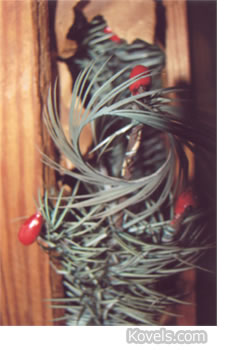Q: I bought a 6-foot feather tree at an estate sale. I was told it had never been removed from the original shipping container. The container consists of four boards with a wood square for the bottom. It was shipped from Famous-Barr Co., St. Louis, Mo., to Centralia, Ill. The tree, which comes with electric Christmas lights, is wrapped in brown paper partway up and then in newspaper dated 1944. I was wondering what the value of the tree is. Should I sell as is or should I uncrate it?
A: Feather trees were first made in Germany in the mid 1800s, when cutting Christmas trees was banned to prevent deforestation. The trees were made by wrapping goose feathers around wire “branches” and fastening them to a wooden “trunk,” which was fastened into a wood base. The first feather trees were made of white goose feathers. Later the feathers were dyed green. Feather trees were brought to the United States by German immigrants in the late 19th century. By the early 1900s, feather trees were available through mail-order catalogs and stores. Sears catalogs from the 1930s offer feather trees with Christmas lights. Famous-Barr Co. was founded in St. Louis in 1911 when William Barr Dry Goods Co. and the Famous Clothing Store merged. It eventually became part of Macy’s, and the Famous-Barr name was not used after September 2006. Your tree is the type made in the 1940s, not the more valuable early trees made of feathers. The branches on your tree look like they are made of paper. Do not unwrap the tree to sell it. You should sell your feather tree in its original box. Depending on condition, your tree could be worth $500-$1,000.




That tree is made of feathers not paper. They usually sell for $100 per foot.